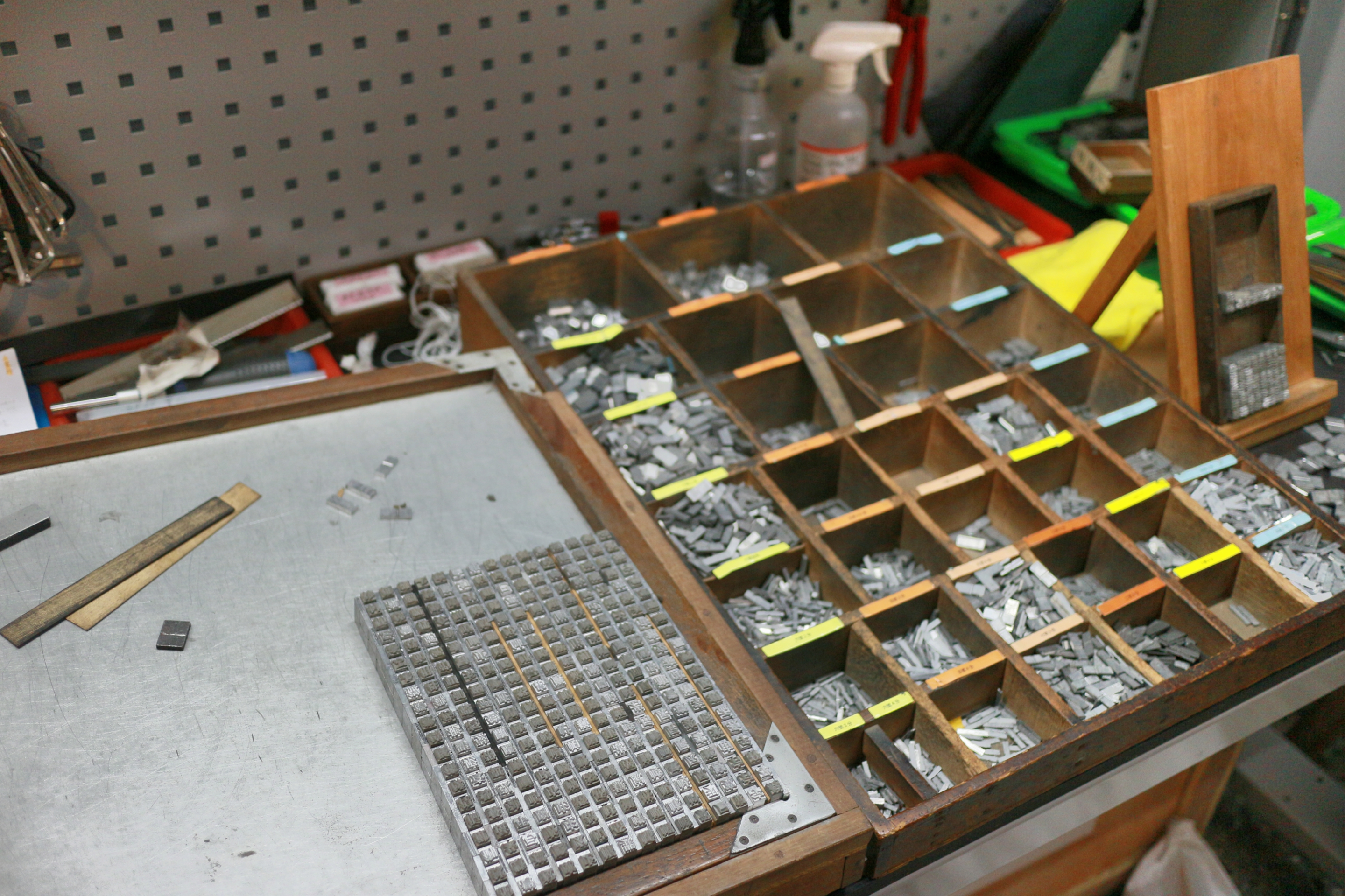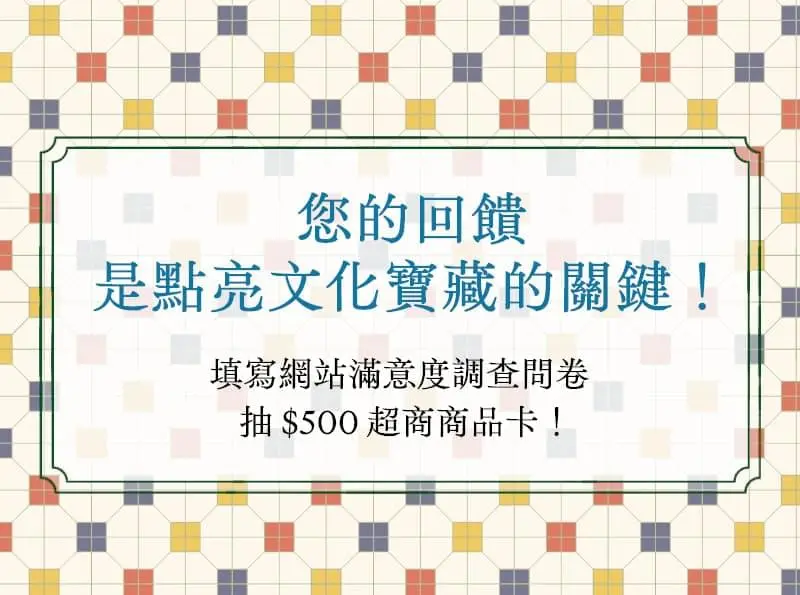活版印刷的排版步驟,是由排版師父將鉛字依稿件內容排列,段首段尾空白處填入鉛角,行與行之間則以行條控制行距,排好的版面需在四周用木片圍繞,再用棉線綁緊打活結固定,這些工作全部都是在排版台上進行。桌面不是水平,主要工作區桌面是左上高右下低,是讓鉛字可以靠右下角貼緊不散落。
一般而言排版台的右半邊桌面是存放鉛角的鉛角箱;正前方立面書架位置是儲放行條的行條架,桌子下方抽屜位置則是放置已完成鉛字版的開放式存版盤。鉛角箱顧名思義是放置鉛角的地方,鉛角依字號也有不同規格,是排版時用來填補鉛字之外的空隙,是我們在版面上看不見的留白處,一個版面必須使用鉛角塞滿所有空白的地方,這樣才可以將鉛字固定在正確的位置上。排版師傅必須熟悉鉛角的寬度與倍數,才能知道要塞進幾倍幾分的鉛角填滿鉛字間的空白。
其排版工作程序,係依照原稿指定所需之字體依序放入檢字盒,再送至排版台,工作者在排版台上排入字體、符號、鉛角,皆依版面配置嵌入,完成活字版組版工作。排版的過程中,若有發現缺字的部分,則會補上反字,告知檢字者進行補字。
The most important step of letterpress printing is typesetting master arranges the leads according to the content of the manuscript. Typesetting master has to fills in the blank with lead at the beginning and the end of the paragraph, also controlling row spacing with lead bar, moreover, they will put the wood chips around the arranged layout and tightly with cotton thread. All these steps are being done on the typesetting table which is not horizontal, the desktop is high on the left side and low on the right side to make types that can be closed to the right side that not easy to be scattered.
Generally, the right half desktop of the typesetting table will be the empty quadrat container for lead storage; the front façade bookshelf keeps the lead bar for row spacing; the drawer under the typesetting table will be the place where to keep those finished types. "Quadrats container" is the place to keep those quadrats, and different size series will have a different specification which is used to fill the blank during typesetting where we can't see on the layout. It is necessary to fill in all blank with quadrats and we can make sure that all the types will be in the right position. The typesetting master must be familiar with the width and multiples of quadrats, to fill in the correct quadrats.













